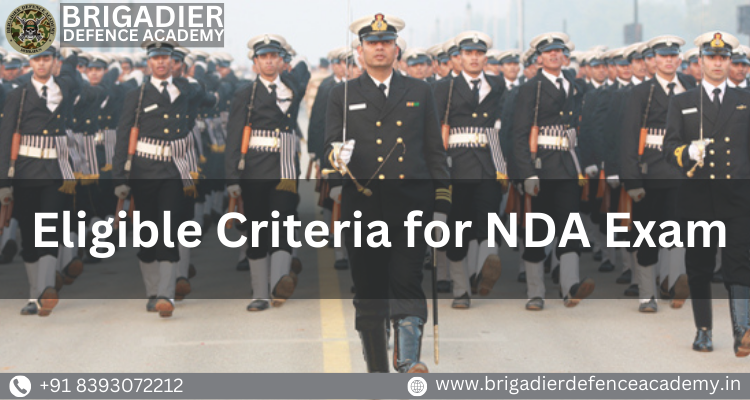Eligible Criteria for NDA Exam
Introduction
The National Defence Academy (NDA) is one of the most prestigious defence academies in the world. It is a joint service academy of the Indian Armed Forces that trains cadets to become commissioned officers in the Indian Army, Indian Navy, and Indian Air Force. The NDA is located in Khadakwasla, Pune, Maharashtra, and was established in 1954.
To be eligible for the NDA exam, candidates must meet certain criteria. These criteria include age, nationality, marital status, educational qualification, and physical standards. In this blog post, we will discuss all of the eligible criteria for the NDA exam in detail.
Age
Candidates must be between the ages of 16.5 and 19.5 years as on 1st July of the year of examination. This means that candidates must have been born between 2nd January 2005 and 1st January 2008 to be eligible for the NDA 2024 exam.
Nationality
Candidates must be Indian citizens.
Marital Status
Candidates must be unmarried.
Educational Qualification
Candidates must have passed the 10+2 exam from a recognized board of education. For the Army Wing of NDA, candidates must have passed the 10+2 exam with any subjects. However, for the Air Force and Naval Wings of NDA, candidates must have passed the 10+2 exam with Physics and Mathematics.
Candidates who are appearing for the 10+2 exam can also apply for the NDA exam, but they must produce their passing certificate before the commencement of the course.
Physical Standards
Candidates must meet certain physical standards to be eligible for the NDA exam. These standards are different for the Army, Navy, and Air Force Wings of NDA.
Army Wing
- Height: Minimum 157.5 cm
- Weight: Proportionate to height
- Chest: Minimum 77.5 cm, expanded to 82.5 cm
- Eye Sight: 6/6 (distant vision) in each eye without corrective lenses
Navy Wing
- Height: Minimum 157.5 cm
- Weight: Proportionate to height
- Chest: Minimum 77.5 cm, expanded to 82.5 cm
- Eye Sight: 6/6 (distant vision) in each eye without corrective lenses
Air Force Wing
- Height: Minimum 162.5 cm
- Weight: Proportionate to height
- Chest: Minimum 77.5 cm, expanded to 82.5 cm
- Eye Sight: 6/6 (distant vision) in each eye without corrective lenses
Candidates who are found to be medically unfit during the medical examination will not be allowed to join the NDA.
How to Apply for the NDA Exam
To apply for the NDA exam, candidates must visit the official website of the Union Public Service Commission (UPSC). The UPSC releases the NDA notification twice a year, once for the NDA 1 exam and once for the NDA 2 exam.
Candidates can apply for the NDA exam online by filling up the application form and submitting the required documents. The application fee for the NDA exam is Rs. 100 for general and OBC candidates and Rs. 25 for SC/ST candidates.
Selection Process
The selection process for the NDA exam consists of two stages: written exam and SSB interview.
Written Exam
The NDA written exam consists of two papers: Mathematics and General Ability Test (GAT). The Mathematics paper contains 120 objective-type questions and the GAT paper contains 150 objective-type questions.
Candidates must qualify in both the papers to be eligible for the SSB interview.
SSB Interview
The SSB interview is a five-day interview that is conducted by the Services Selection Board (SSB). The SSB interview assesses candidates on their intelligence, personality, and leadership qualities.
Note: If you are looking for NDA Coaching in Dehradun then Brigadier Defence Academy in Dehradun is best Coaching Academy for you.
Conclusion
The NDA exam is a competitive exam, and only a few candidates are selected each year. However, if you meet the eligible criteria and prepare well, you can increase your chances of success in the exam.
Additional Tips
- Start preparing for the NDA exam early. The syllabus for the written exam is vast, so you need to give yourself enough time to cover all the topics.
- Solve previous year’s question papers to get a feel of the exam pattern and the types of questions that are asked







